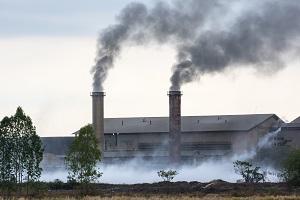Black carbon (BC) is an air pollutant with significant impacts on our health and climate. Resulting from incomplete combustion processes, it is part of fine particulate pollution (PM2.5) and estimated to have a warming impact on climate that is 460–1,500 times greater than that of carbon dioxide (CO2) per unit mass. It is recognized widely that mitigating BC emissions (in addition to CO2) is necessary to achieve the Paris Agreement goals. Mitigation is also key to slowing the thawing and melting of polar ice and to protect high-altitude ecosystems, where black carbon can deposit and darken the surface of ice and snow. This is in addition to the well-established air quality benefits. BC mitigation represents a major opportunity to implement policies that will have co-benefits for climate and air quality.
As part of the fine particular matter, BC is regulated under the so-called amended Gothenburg Protocol (Protocol to Abate Acidification, Eutrophication and Ground-level Ozone), the latest protocol to the UNECE Convention on Long-range Transboundary Air Pollution. Parties should, in implementing measures to achieve their national targets for particulate matter, give priority to those measures that also significantly reduce BC.
New guidance discussed at the 59th session of the Working Group on Strategies and Review (18–21 May 2021) under the Convention suggests that in the UNECE region additional measures for wood-fueled heating stoves and agricultural waste burning can reap the biggest benefits to reduce both PM2.5 and BC emissions, promising benefits for air quality, climate and health. While good practices for wood-burning have already been discussed, Parties considered measures to reduce emissions from agricultural waste burning at the 59th session of the Working Group.
Parties agreed that the many negative economic and environmental impacts of agricultural waste burning, ranging from air pollution, greenhouse gas emissions, and soil erosion to loss of biodiversity and soil nutrients, which require the use of expensive fertilizers to maintain crop yields warrant measures to substitute agricultural waste burning practices. Fire-free methods, such as conservation agriculture, low-till methods, and alternative ex situ uses of crop residues, such as using it as animal fodder and bedding, or as pulp, bioplastics and in district heating plants, not only eliminate emissions of air pollutants and greenhouse gases (GHGs), but also provide some level of adaptation and resilience to climate change and extreme weather events.
While the use of fire in agriculture has been regulated in some countries in the region since the early 1980s, it is still practiced in various countries. Experiences from countries show that the transition from burning to fire-free methods is proven to be most successful and cost-effective when based upon three main pillars: (a) mapping and monitoring to define the problem; (b) education and training of farmers; and (c) developing regulations and financial support. Awareness-raising, training and dissemination of relevant information on the alternatives to agricultural waste burning are essential to reach all concerned stakeholders.
Both the guidance document on agricultural waste burning and the guidance on prioritizing reductions of particulate matter from sources that are also significant sources of black carbon are being forwarded to the Executive Body for adoption at its 41st session in December 2021 (6-10 December 2021).


